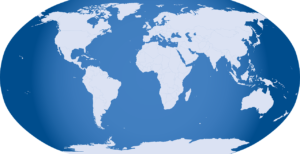Portfolio
 Innovation Alignment
Innovation Alignment

by Bansi Nagji & Geoff Tuff (HBR 5/31/12)
We helped a multi-national company which leveraged organic innovation create an alignment model
The basic process was:
- Employees organized innovation activities on their own
- Grassroot groups created prototypes
- Groups worked to build internal awareness trying to get their idea adopted by an internal development team
- Once adopted the idea received funding and became part of the product roadmap
The model had advantages:
- Employees interacted and learned to work together
- An entrepreneurial spirit became part of the company culture
- Employees learned to sell, build alliances, and act on behalf of the greater good
But with growth came disadvantages:
- People could not find and learn about each other easily
- Often similar ideas would appear out of multiple teams
- Teams had trouble getting time to create prototypes
- It became difficult to gain awareness due to the amount of competition
WorthWize accomplished:
- Developing innovation guideposts working with the CTO and executives
- Helping advertise these guideposts across the company
- Creating a simple process to collect innovation ideas and team information
- Mapping projects across the guidepost areas using the innovation aspiration approach
- Interacting with teams to combine similar projects
- Encouraging teams with unaligned projects to change the scope or merge with aligned projects
Unique to this effort was gaining visibility into projects teams without appearing to be a policing function. Key corporate technologists and executives provided introductions to innovation teams. Trust was built with team members to gain their participation. Our “low-impact” approach allowed reorganizing efforts to be successful without impact to the company culture.
 Metalnx – Open Source Development
Metalnx – Open Source Development
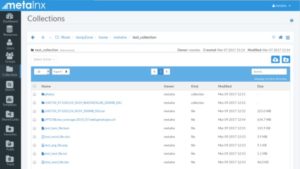
Metalnx is an administration and metadata management GUI for IRODS (The Integrated Rule Oriented Data System: www.irods.org). It provides the following benefits:
For administrators:
- single pane status overview of an IRODS grid
- GUI based user & group management
- Support for PAM-based security including active directory
- GUI interface for grid collection administration
For users:
- simplified IRODS collection management including favorites and permissions control
- user-defined metadata management
- simplified metadata & file property searching
- consistent application of user-defined metadata via metadata templates.
Metalnx grew as an idea from learning how genomics IRODS users, who love its framework and capabilities, desired a simple graphical user interface. The tool was developed by EMC making it easier to deploy IRODS and the supporting infrastructure.
A small, creative Brazil-based development team completed the prototype, product beta, and four released versions. The design philosophy was based on:
- Using modern agile development methodology, containers, and continuous integration
- Leveraging open source web tools that work on PCs, tablets, and phones. Tools such as Bootstrap, Spring, D3, Datatables, and Thymeleaf.
- Stand aside design – Metalnx sits beside IRODS to allow independent scaling & deployment
- Constant user feedback from demonstrations and trials
- Simple, visual interactions that are self-evident to the user without training.
Metalnx was an EMC innovation award winner and nominated for “Best in Show” at BioIT World 2016. Most recently, the tool has been donated to the IRODS Consortium ( www.github.com/irods-contrib/metalnx-web ) and a community-led development team is forming.
R&D Portfolio Management
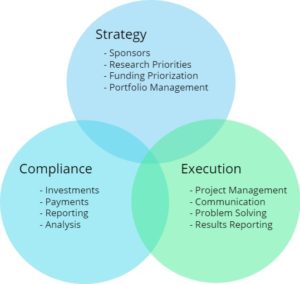
Created from scratch a $3.5M+ annual software research and development portfolio based on a Brazil-based tax incentive program.
The program allows some manufacturers to lessen their product tax overhead but requires R&D reinvestment under strict rules within the country. Some characteristics of the program:
- A fixed percentage of revenue must be reinvested within the calendar year earned
- Investments must be made in specific regions of the country
- Investments must be split between academic and commercial R&D
- A series of quarterly and annual reports must be made to the government
Our role involved:
- Selection of projects and partners to execute them (both academic and commercial)
- Making investments based ONLY on earned revenues (the program was self-funded)
- Developing a revenue prediction model
- Budget planning, execution, tracking, and reporting
- Project monitoring, results tracking, and reporting
- Some contract requirements & government rule compliance
Typically, 7 to 9 projects were underway at any given time involving 45 – 55 software developers, professors, and graduate students.
Product Development
Program management for the development of a single bay, consumer Network Attached Storage product for a telecommunications company.
The effort had several interesting challenges and features:
- Contained an on-demand, adaptive video transcoding capability
- Simplified, highly visual user interface
- Combined technologies from 5 individual international companies
- Involved over 100 software developers and hardware engineers
- Integrated content key management
- Fanless cooling for near silent operation
Our role involved:
- Identification of technologies to use and partners
- Creation of the RFP bid response
- Creation of requirements and terms for contract negotiations
- Coordination of work and schedules from all participating companies
- Day to day monitoring of all development activities
- Overall program management including customer executive reviews
Digital Transformation
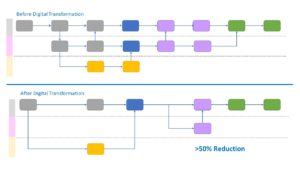
Created transformation workshops helping a mid-size company improve its customer interaction experience. Customers interacted with the company via:
- Direct sales & support personnel
- Website forms
- Telephone sales & support
Each interaction method was its own discrete process with little sharing of customer information between teams.
Following a study of internal company documents, interviews, and market review workshops were crafted to help key process leaders:
- Understand customer current and future needs
- Review how the competition interacted with customers
- Identify the value-add steps in the current framework
- Identify process steps that were unnecessary, duplicate, costly, or added little value
- Develop a streamlined process framework to improve customer experience & lower costs
- Perform simulated walkthroughs of the model identifying requirements and gaps
- Collect results into an action plan for further work
Process changes reduced steps by 50% in walkthroughs. The new process is in development. Later analysis shows it has potential to save 10-15% in operating costs.
Global Software Strategy
Developed a global partner software development strategy. Key to the success of the initiative was:
- Growth in small increments (typically 3-5 developers at a time)
- Convincing line managers to sacrifice budget to fund the effort
- Tight integration of nearshore and offshore staff supporting deep knowledge transfer
- Careful selection of key architect level personnel
WorthWize provided help with:
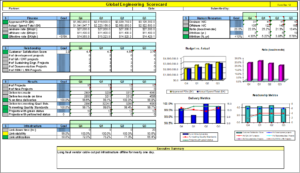 Selecting internal projects to scale & convincing managers to participate
Selecting internal projects to scale & convincing managers to participate- Budget planning, contracts, and execution timing
- Teaching managers and line personnel how to be successful using global teams
- Selecting key personnel, allowing the partner to select others
- Knowledge transfer planning & communication models
- Developing a quantitative partner scorecard system to monitor progress
- Establishing regular reviews to report progress and problems
- Teaching partner personnel how to think like and anticipate their customer needs
Over time, using this approach, global software teams grew to several hundred saving millions in costs which were reinvested into additional product development

